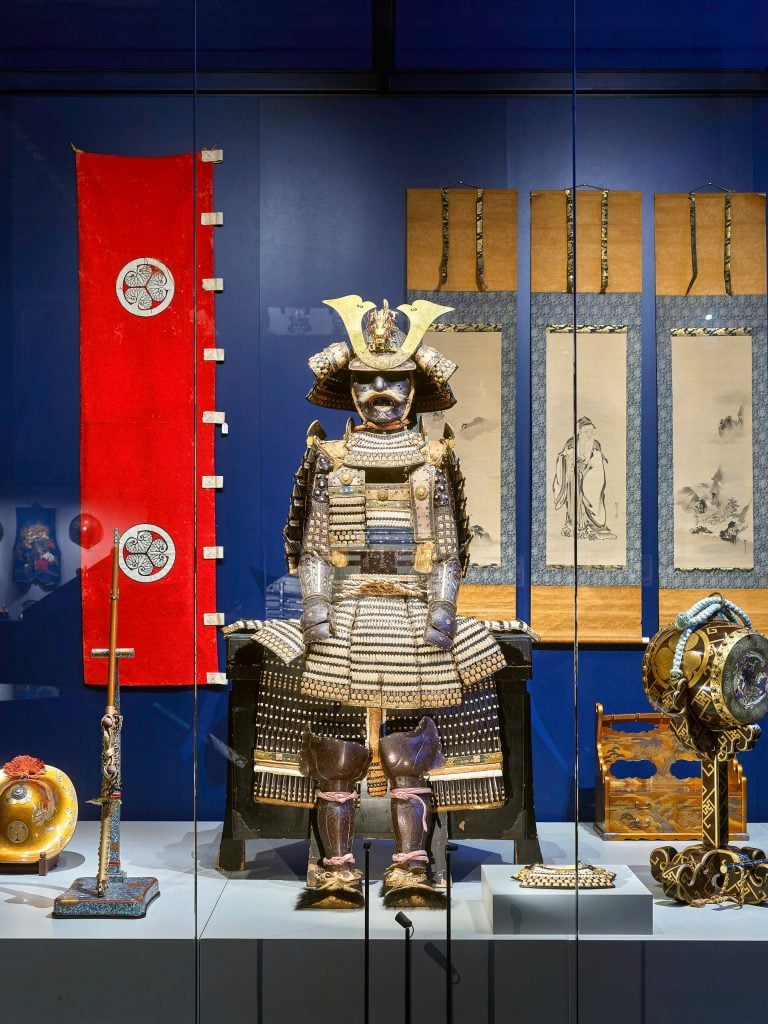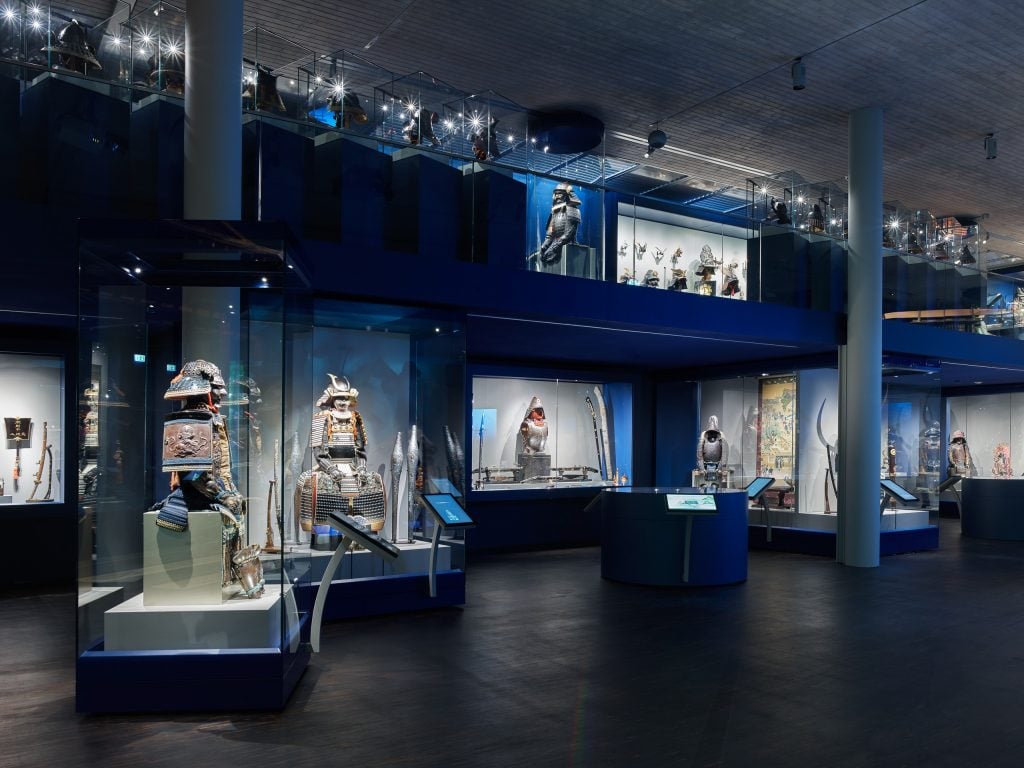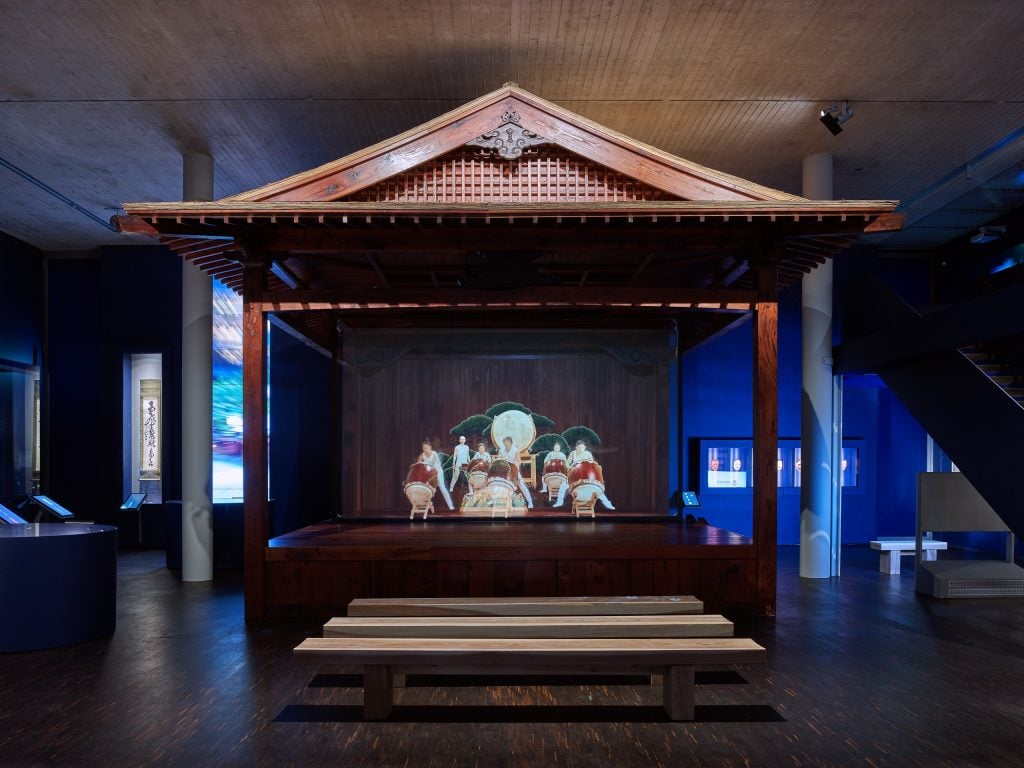Art Collectors
What I Buy and Why: Peter Janssen on How a Flea-Market Find Inspired Him to Build a Leading Private Collection of Samurai Objects
The German entrepreneur recently opened a museum for his collection in Berlin.

The German entrepreneur recently opened a museum for his collection in Berlin.

Kate Brown

Three decades after coming across a samurai sword at a flea market in his home city of Berlin, German entrepreneur Peter Janssen has amassed a formidable and highly focused collection of art dedicated to the legendary Japanese fighters. His trove of objects spans a millennium and explores the culture and myth that surrounded the samurai across the centuries.
Today, Janssen—who also boasts a black belt in karate—has over 4,000 objects. About 1,000 of them are on view in a new museum he opened this month in the German capital.
Situated next door to KW Institute for Contemporary Art, the Samurai Museum is a two-floor venue in the district of Mitte (the prime venue location was the longtime home of the Thomas Olbricht collection, which closed in 2020). It highlights the regions and styles of samurai garb and tools, from an 18th-century palanquin (a covered carriage that is held up by human bearers) to delicate tea utensils dating to the 1500s.
With its range of armor, helmets, and masks, as well as rare crafted swords dating back to the 8th century, the exhibition smartly uses virtual reality and interactive elements to help animate the culture of the samurai, demystifying customs, myths, and rituals from across their history. On virtual didactic panels, you can scroll over the objects on view in nearby vitrines, then zoom in to learn more about their aesthetic details and design histories. The museum also has cinematic installations that bring these legendary figures to life.
On the heels of the Samurai Museum’s opening, Artnet News caught up with Janssen about his collection, the life-size Japanese-style theater and teahouse that he commissioned for the space, and more.

Installation view, Matsudaira clan armour, Edo Period (17th-18th century). Photo: Alexander Schippel © Samurai Museum Berlin
What was your first purchase?
I bought a katana [a Japanese sword characterized by a curved, single-edged blade] at a flea market. I never intended to make a collection out of it, but here we are more than 30 years later.
What was your most recent purchase?
The collection was missing a child’s armor, so I decided to get one when the opportunity came up. It belonged to a high-standing daimyo (a feudal lord) and was laboriously crafted, just as a full-size one, but only intended for a short period as the child would quickly grow out of it. That fascinated me.
Which works or artists are you hoping to add to your collection this year?
A tsuba (sword guard) from the Ishiguro school. The school was founded by Ishiguro Masatsune in the late Edo period, who developed motifs and techniques that would influence whole generations. It is particularly known for employing a dark alloy made of copper and gold (shakudō) and its fine chasing technique and designs featuring flowers and birds. I like that many pieces are signed, you can feel a connection to the person who made it.

Swords in the Samurai Museum Berlin. Photo: MarioHeller © Samurai Museum Berlin
What is the most expensive work of art that you own?
An armor from the Matsudaira clan. This is the clan from which Tokugawa Ieyasu, the founder of the Tokugawa shogunate, descended. This armor is a representative example of the types of armor made during the late 18th and early 19th centuries for wealthy patrons. The period was characterized by nostalgia among the warrior class and a sense of longing for bygone eras, when their ancestors had performed glorious deeds in battle. Some had authentic old armor refurbished for their use, while others, as the one in my collection, had new suits of armor made in ancient styles that incorporated old components.

Installation view. Photo: Alexander Schippel © Samurai Museum Berlin
Where do you buy art most frequently?
Mostly through auctions and dealers. Over the years I have also developed many friendships with fellow collectors from whom I occasionally buy as well.
Is there a work you regret purchasing?
No, every piece is dear to me for different reasons.
What work do you have hanging above your sofa?
I don’t have a wall behind my sofa! Apart from that I don’t keep much of my collection at home, except for my study. My most cherished possessions in the collection are now in the museum and I enjoy seeing them when I walk through it.

Noh-Theatre in the Samurai Museum Berlin. Photo: Alexander Schippel © Samurai Museum Berlin
What is the most impractical work of art you own?
That would probably be Noh-Theater, which I commissioned for the museum. It was constructed in Japan following traditional building techniques, was then shipped to Berlin, and reassembled by Japanese craftsmen. It is a beautiful thing to behold and it really is a work of art.
What work do you wish you had bought when you had the chance?
An old armor in its original state from the 14th century. Now it is in another collection and I regret it very much.
If you could steal one work of art without getting caught, what would it be?
The “Big Maple Leaf” coin in the Bode Museum, but it has already been stolen. Maybe I could get it back.